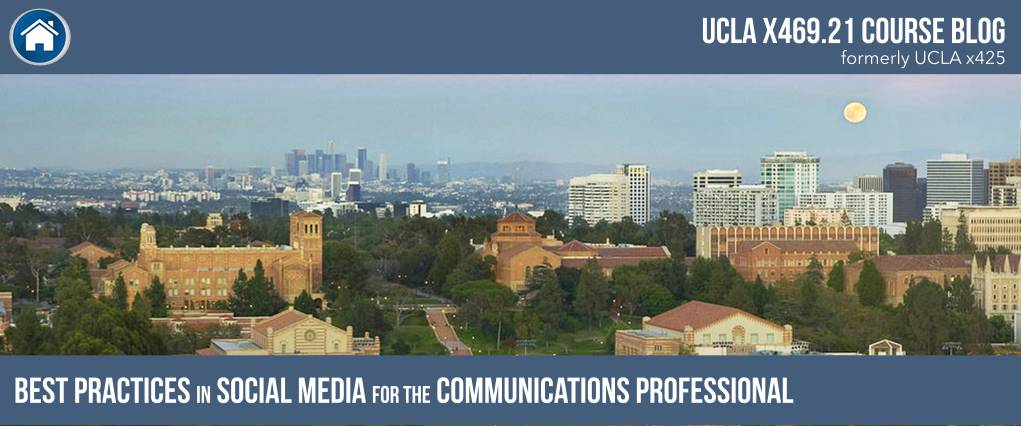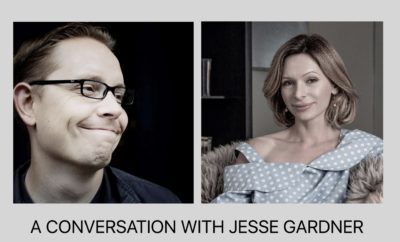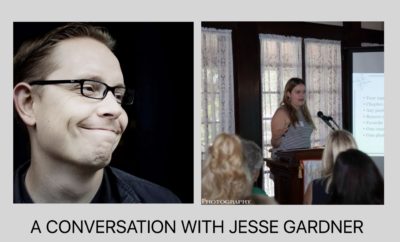WEEK 2: A Conversation with Guest Speaker Tony Adam by Danielle Rouillard
By UCLA X469.21 Student Danielle Rouillard
If an outfit could be search engine optimized to target a room full of UCLA students, Tony Adam would have #NailedIt.
Tony had done his “Keyword Research” and knew what this audience was searching for. Arriving in style in a blue and gold button down, his outfit was on point.
Grabbing our attention instantly with a shirt as impressive as his resume (which includes stints at major-league tech firms like Yahoo, PayPal and Eventup, as well as at his latest startup, Visible Factors), Tony got straight into the meat of the topic of the night: SEO and Social Media.
From personal to professional, reputation management to blogging, Tony covered all the basics for creating an SEO friendly social strategy.
Now for a n00b to the SEO game, it can be hard to imagine just what’s going on when search engines crawl a website, but let’s give it a go. But where to start?
Step 1: Determine your audience. Who is your brand trying to target?
Step 2: Find out what that audience is searching for.
Step 3: Integrate keywords within your content to target that search.
Finding the right keywords can seem like a daunting task, but programs like Google Adwords and Google Keyword Planner offer a leg up by helping you determine your keyword list.
Once you’ve got your audience and a list of target keywords, it’s time to start integrating that information into your content!
Content, you say? Where does that come from? Your content is created in the form of your blog posts, tweets, Facebook posts, etc. And ALL of these can be SEO optimized so your websites and social pages have a better chance of showing “above the fold” (or on page 1 of google, without scrolling).
Tip: Get that content searchable even faster by sharing a link immediately on Twitter.
While it’s important to integrate keywords into your content, first and foremost you must create content that is fresh, engaging and HIGH QUALITY. Keywords can only really help if your content is something people want to share in the first place.
Once you’ve got content for the web pages you own (your primary website, blog, etc.), you can focus on the tags. Meta tags.
Title tags are the most important, as they are what search engines crawl first. Second most important are your description and header tags. Be sure to not over dilute either; just focus on 2-3 key phrases. The URL for each web page also plays an important role.
Once you’ve got these basics down, you’re playin’ with the big boys and you can start to focus on that pesky thing called your REPUTATION.
Your online reputation could decline for one of two reasons, according to Tony.
- Your brand just isn’t showing up as much because people don’t search for it as much, so your brand strength declines.
- You’ve got a bad rep. Bad reviews, negative content, and strong competitors can all contribute to this.
So if you’ve got 99 problems and a bad rep is one, here’s what you can do to improve that Google results page.
Create more positive content about yourself! Yay, we’re all a little vain so keep it up. Twitter? Google Plus? Facebook? Your personal blog? Tumblr? LinkedIn? Create them ALL. The more content out there about you or your brand, the more pages you’ve got to potentially push the negative content that’s dragging you down (literally AND figuratively though, AM I RIGHT?).
Another way to increase your SEO value and push your pages up in search results is through “Inbound Linking.” But that’s where it gets a bit tricky.
If you’ve started a blog, you already know you can link out to other sites from your posts. But did you ever think about people who might be linking back to YOUR site? Those links that come back to you are “Inbound Links,” and they’re great.
Whatever wording the link is connected with is called the “anchor text.” These words will become associated with the link by the search engine crawling the site.
A link-building program is a great way to capitalize on this, by exchanging posts with other bloggers and linking to each other’s sites, but that gets a little scary (see: “Black Hat SEO”). While it can be complex to get people to link to your site organically without paying or prodding them to do so, a great way to take advantage of inbound linking is by using it within your own site!
Tony says internal linking is undervalued… it’s the only way to control linking (for free!) and direct search engines to understand what each page is about through the anchored text.
So you’ve got the basic best practices of SEO for your site. You know the tools. You know the man (Tony Adam, in case I forgot to mention him). So get started!
I tip my hat to Tony for helping me get a handle on SEO. The hat’s color? Maybe blue. Maybe gold. But one thing’s for sure…
I know me and Tony ain’t messin’ with no “black hat.”






